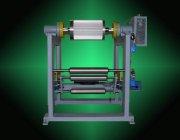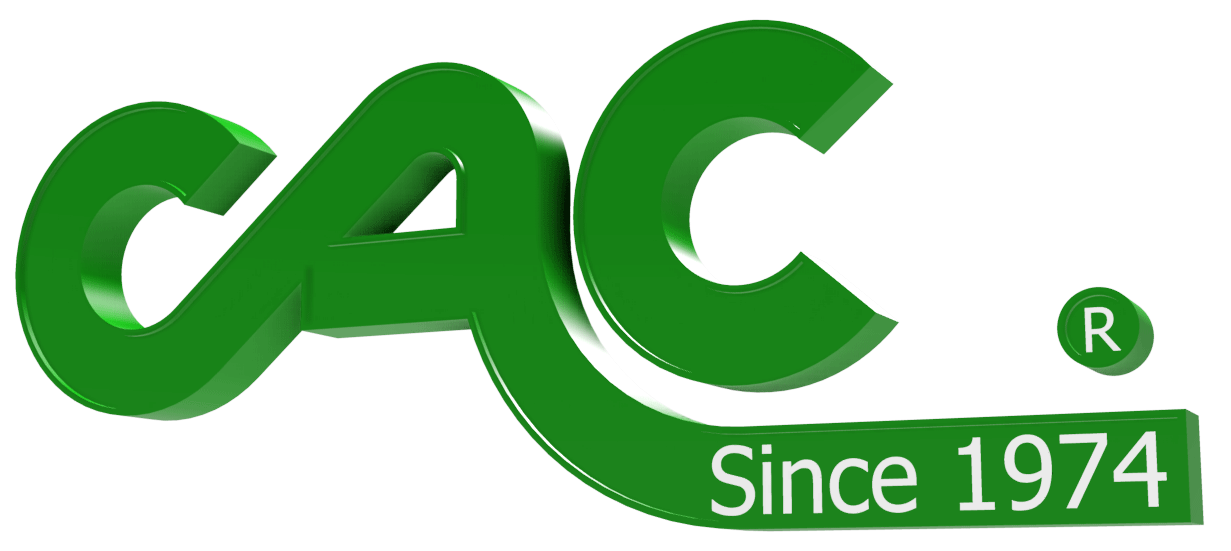
|
Roll Support System |
Modular Rewinds and Unwinds Allow Easy Increased Production and Added Capabilities
Wind Gap, Pennsylvania: CAC's latest single station and multi station unwind and rewind systems are engineered as modular technology allowing them to be easily integrated into existing lines. Among the benefits offered by CAC unwinds and rewinds are that they allow processors to easily and economically add a station and increase production, expand capabilities and reduce changeovers by allowing larger rolls.
According to Jeff Damour, CAC Engineering Manager, CAC unwinds and rewinds can be custom configured using off the shelf components and may be as simple or as sophisticated as the customer's application requires. They are exceptionally competitively priced competitive, are usually delivered and installed very quickly and are compatible with all web production materials.
CAC offers an exceptionally broad range of sizes and capabilities, including manual and automatic controls. Rolls can be handled at up to 2000 fpm in diameters to 60 inches and web widths to 120 inches and weights to 3000 lbs. For wider web applications, stand alone systems are the preferred choice. Machine mounted systems are available for narrow web operations and are offered in a wide range of simple to sophisticated systems.
”The benefits of our unwinds and rewinds are extraordinary. With a simple installation we can allow a converter to develop an entirely new process, such as laminating, for example. The modular construction designs made possible by our decades of experience in virtually all types of web operations make these systems an unusually cost effective solution to a converter's desire to grow without investing in a major overhaul. It is precisely the kind of technology converters tell us they are looking for-effective, easy to install, easy to maintain,“ Damour said.
CAC unwind and rewind options include single and multi-station in dual support pedestal and cantilevered configurations. CAC unwind and rewind stands feature compact designs to minimize floor space requirements and are heavy-duty; constructed of structural steel for maximum strength and rigidity. All systems are engineered to be readily retrofitted to existing lines and to seamlessly incorporate the full range of CAC web handling technology including air shafts, and safety chucks.
A typical custom configured CAC unwind/rewind system may include a wide range of CAC supplied options, including closed or open loop automatic tension control, web guide systems, COR-LOK® air shaft featuring exceptional gripping power, Shaft-Lok safety chucks, and idler rolls featuring Winertia® engineered aluminum tubing.
Currently celebrating its 31st year of success, Converter Accessory Corporation designs, engineers and manufactures web handling equipment for converters of paper, film, foil, nonwovens and textiles. Engineered solutions include high quality, cost effective equipment from the simplest aluminum core cone to the most sophisticated unwind/rewind system. CAC is represented by knowledgeable sales engineers and provides extensive consultation and post sales support.
For more information contact Pam Damour, Converter Accessory Corporation, 201 Alpha Road, Wind Gap, PA 18091-1279, (800) 433 2413, fax (610) 863 7818. CAC@epix.net Web site: www.handleyourweb.com
New Dual Station Scrap Rewind System Offers Exceptional Efficiency

Converter Accessory Corporation (CAC®) is introducing a new dual station system (SW2) that allows on-the-fly cutover with minimal to zero stop time. The SW2 is engineered for web widths to 30 inches and capable of rewinding rolls up to 36 inches in diameter in weights to 600 pounds. A robust drive delivers speed ranging from fractional to 1000 feet per minute. The complete, belt driven system is supplied with a torque controlled motor with manual control, digital torque setting and emergency ”stop“function.
The SW2 will readily accommodate automatic tension control if desired.
According to Jeff Damour, CAC® Engineering Manager, the SW2 is ideal for rewinding edge trim and label matrix scrap and is much faster than single station systems. While aimed at scrap rewind, the SW2 may also used for any rewinding application that fits the SW2's capabilities.
”Like all CAC systems, the SW2 is engineered for easy operation, easy maintenance and easy installation. It can be installed on a machine frame, table top or floor mounted. The belt drive is designed for reliable, quiet operation,“ Damour said.
The SW2 features CAC's widely used COR-LOK air shafts for fast, easy core locking and rapid roll changes.
In addition to the SW2, CAC offers a wide range of unwind and rewind technology optimized by CAC's unique ”building block“ approach. This approach begins with two basic pedestals to which any or all of CAC's web handling accessories can be added; including core support systems, shaft support systems, pneumatic conveying systems and wrinkle removal systems.
Drawing on the experience of more than 30 years of success, Converter Accessory Corporation designs, engineers and manufactures web handling equipment for converters of paper, film, foil, nonwovens and textiles. Engineered solutions include high quality, cost effective equipment from the simplest aluminum core cone to the most sophisticated unwind/rewind system. CAC is represented by knowledgeable sales engineers and provides extensive consultation and post sales support.
For more information contact Pam Damour, Converter Accessory Corporation, 201 Alpha Road, Wind Gap, PA 18091-1279, (800) 433 2413, fax (610) 863 7818. CAC@epix.net Web site: www.handleyourweb.com
Grooved Rollers for Wrinkle Removal

 |
This type of spreader roller has no wrap angle. Because the web is not supported across its full width, the material must be fed straight in and out of this spreader roller assembly.
Advantages:
- This type of spreader roller is the most aggressive.
- Simplicity of design makes this type of spreader roller easy to maintain.
- The amount of spreading is easily adjustable, by changing the angle of each nip set independently of each other.
- Works well with woven and non-woven webs.
Disadvantages:
- Because this spreader roller will not support the web across its full width, it will mark, distort and possibly tear most foils.
- This type of spreader roller is specifically designed for woven and non-woven materials. Any other type of materials may have difficulty with this type of spreader roller, because of web distortion.

 |
RETURN TO TOP |

 Please wait
Please wait
















